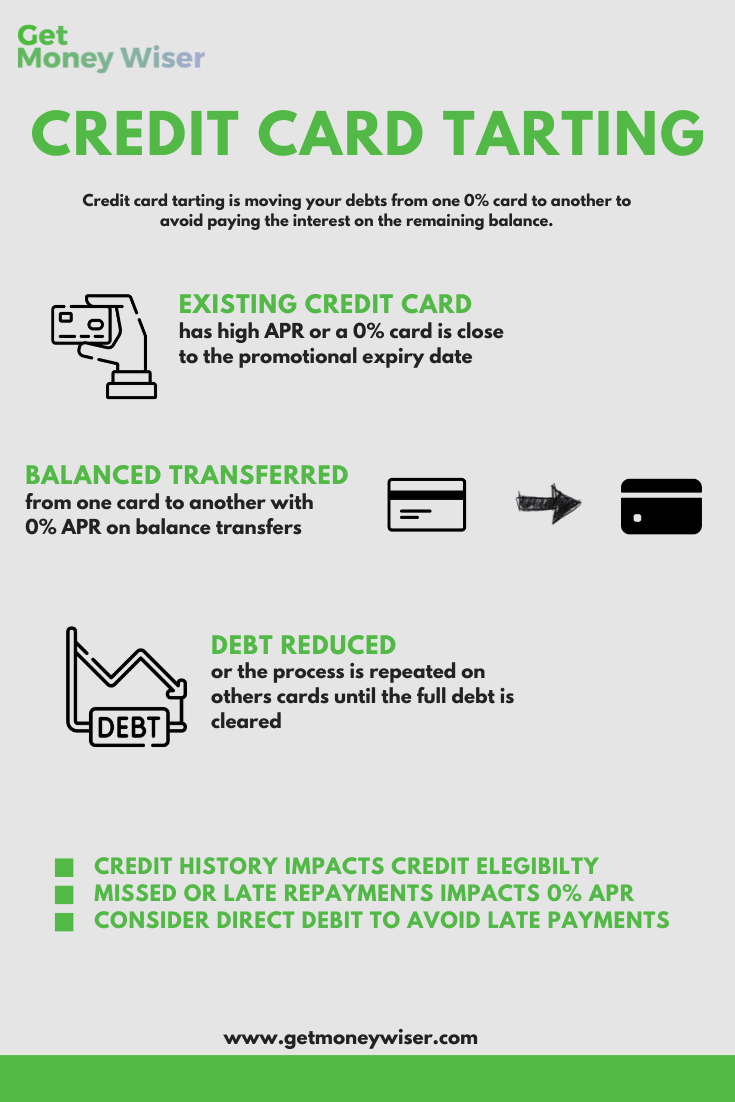Maximising Your Money: The Magic of Credit Card Tarting


Credit card tarting, also known as credit card stacking, is a strategy used by individuals to take advantage of interest-free promotional periods and balance transfer offers offered by credit card companies.
This method involves transferring existing credit card balances to new cards that offer lower or zero interest rates for a specific period, typically ranging from six months to a year. Here's a more detailed summary of credit card tarting, along with its pros and cons.
There is also a free cheat cheat at the end of the blog post, so keep reading and remember that this is not advice because education is superior to advice.
Pros of Tarting
- Interest Savings: One of the main advantages of credit card tarting is the ability to save money on interest charges. By taking advantage of promotional periods with zero or low interest rates, individuals can allocate more of their payments towards the principal balance, allowing them to pay off their debts faster.
- Debt Consolidation: Credit card tarting can help consolidate multiple credit card debts into a single card. This can simplify the debt management process by having one monthly payment to track, making it easier to stay organised and on top of payments.
- Improved Cash Flow: With lower or no interest payments during promotional periods, individuals can free up cash flow to allocate towards other financial goals or expenses.
- Rewards and Perks: Some credit cards offer rewards programs, such as cashback or travel points, which can provide additional benefits for users who are responsible with their credit card tarting strategy. This can result in earning rewards while effectively managing and paying down debts.
Cons of Tarting
- Potential for Accruing More Debt: Credit card tarting requires discipline and responsible financial management. If individuals continue to spend beyond their means or use credit cards impulsively, they may accumulate more debt rather than paying it off.
- Balance Transfer Fees: Some credit cards charge fees for balance transfers, typically ranging from 3% to 5% of the transferred amount. These fees can reduce the potential interest savings, so it's important to consider them when evaluating the overall benefit of credit card tarting.
- Organisational Challenges: Managing multiple credit cards, keeping track of promotional periods, due dates, and minimum payments can be complex and time-consuming. It requires diligent organisation and careful monitoring to ensure payments are made on time and promotional periods are leveraged effectively.
- Impact on Credit Score: Opening multiple credit card accounts within a short period can temporarily lower your credit score due to the credit inquiries and the new accounts appearing on your credit report. However, as you demonstrate responsible credit management and make timely payments, your credit score can recover and potentially improve over time.
Summary
Credit card tarting can be a useful strategy for individuals looking to save on interest payments, consolidate debts, and manage their finances more effectively. However, it requires discipline, careful planning, and organisation to avoid falling into a cycle of debt. It's important to consider individual financial circumstances, evaluate the costs and benefits, and seek professional advice if needed before implementing a credit card tarting strategy.
Until next time, stay happy and keep getting money wiser



